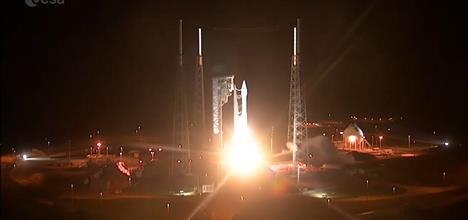
Harwell scientists celebrate successful launch of UK-built Solar Orbiter
A state-of-the-art science instrument that was developed and built by a team of 80 people, led by Harwell-based scientists, is on-board the Solar Orbiter spacecraft, launched today from Cape Canaveral.
Now at the start of a ~two-year journey towards the Sun this instrument, alongside nine others, will observe our nearest star close-up and study its polar regions for the first time, giving scientists on earth unprecedented insight into how our parent star works. Investigating the Sun-Earth connection the data gathered will help us to better understand and predict periods of stormy space weather.
Commenting on why this mission and the insights to be gained are important, Business Secretary Andrea Leadsom said, “Solar storms could cause major disruptions to technologies including our energy grid, mobile phone signal and navigation systems.”
The 10 state-of-the-art instruments on-board the Solar Orbiter include remote sensing payloads that will perform high-resolution imaging of the Sun’s atmosphere – the corona – as well as the solar disc. Other instruments will measure the solar wind and the solar magnetic fields in the vicinity of the orbiter. Three of these 10 science instruments have been developed by scientists from University College London, Imperial College London and STFC’s RAL Space, who led international teams on their design and build.
The Spectral Investigation of the Coronal Environment (SPICE) instrument was led from RAL Space, the UK’s national space laboratory located at Harwell Campus. SPICE will help trace solar wind structures measured at the spacecraft, to their sources at the poles inside dark, slightly cooler areas of the Sun known as coronal holes.
Dr Andrzej Fludra, the RAL Space scientist who led the international consortium for the SPICE instrument was at Cape Canaveral to witness the launch: “It was amazing to see Solar Orbiter launch, it feels like the crowning of the effort of our large team. The next exciting moment will be taking the first spectra of the Sun, and initial observations to check the instrument.”
Collaboration is at the heart of this European Space Agency mission. SPICE alone took five years to develop by a team of 80 people from across Europe and the US. The UK Space Agency invested £20 million in the development and build of the instruments, and Airbus Defence and Space were the prime contractor for the satellite.
Image courtesy of NASA/ ESA. Solar Orbiter launches from Cape Canaveral.